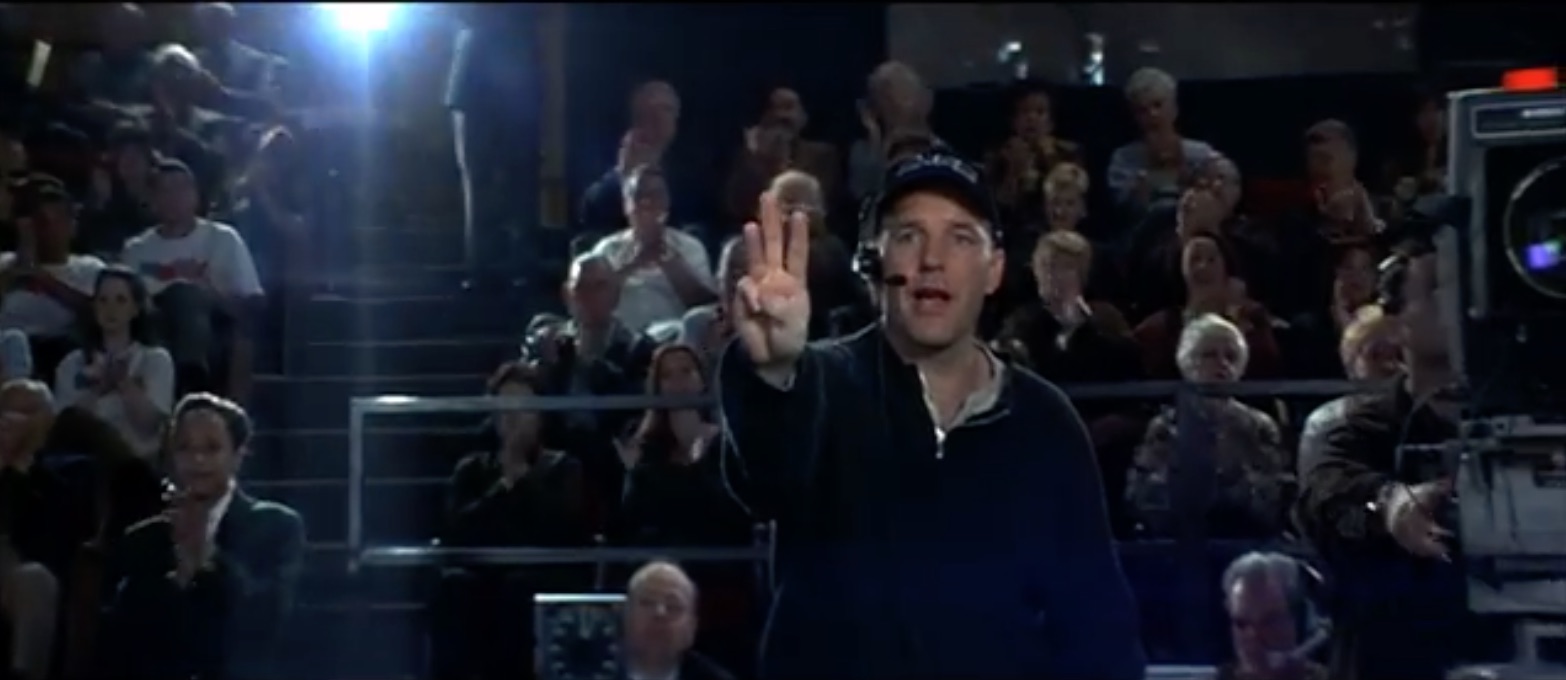Trailer Review - Magnolia
Considering how important a trailer is to the promotion of a film, surprisingly few directors assert control or even have the authority to assert control over its production. Even rarer is the director who makes the trailer themselves. Reportedly, P.T. Anderson was dissatisfied with the studio's poster and trailer for Magnolia, so he took charge of both.
The trailer starts with Aimee Mann's "Momentum" which just from the title you know will be good for the trailer. Its intro is long enough that it allows plenty of time for dialogue and narration before the lyrics kick in. The first line of dialogue from Philip Baker Hall's quiz show is a nice hook because the specificity of the question is positively absurd; it's combined with the P.T. Anderson's pedigree card. The series of swish pans matches well with the piano as we get our first character intro of Stanley Spector.
A risk in editing is becoming predictable. This is especially a concern when doing something like cutting to the beat. If you consistently cut your shots to the exact same downbeat, the video becomes boring because the audience knows what to expect. In this trailer, we quickly realize that it's going to be a series of character intros followed by a bit about that character, and yet I find myself in suspense wanting to know more about the other characters.
Very few trailers have custom shot footage, so it's always cool to see!
Just like in the film, this trailer simply has tremendous, well, momentum. Ricky Jay's narration makes the trailer into a cohesive story of its ensemble cast. The editing doesn't leave a single spare moment, and even though it's cut over Aimee Mann's music, the music doesn't interact with the dialogue at all, and yet it doesn't bother me in this trailer. The only time Aimee Mann's song asserts itself is at the beginning, and the climax in the middle of the trailer.
The only apparent restriction I can see for the editing in regards to the music was that they had to finish the character montage before the chorus plays for a second time. Modern trailer editing is designed to retain the audience's interest with its adrenaline shot quick cuts between dialogue, but even this trailer doesn't use that technique, under P.T. Anderson's direction, this trailer's relentless pace can't help but grab onto the audience, and refuse to let go.
The narration finishes with "And this will all make sense in the end" to say: "We know that was a lot, but trust us." Then there's a quick montage over the chorus which is intercut with the countdown of the TV studio guy to build anticipation.
If there's a countdown in the film, it's safe to bet the trailer editors will try to use it.
This builds up until we get a stopdown followed by some Jon Brion score and John C. Reilly's monologue that carries us through the end of the trailer. This is cut with some cryptic title cards that don't make much sense in the context of the trailer, but we get some literal visual cuts to go along with them (e.g. "people look up," cut to lots of people looking up)
The ambiguity of the titles is probably not great for the trailer's audience, but I think P.T. Anderson was content knowing that its mystery will entice the audience, to the point that telling the actual story of the film is not a concern. If you've seen the film, the cryptic text takes on new meaning, making this trailer a nice companion piece.
Even John C. Reilly's monologue doesn't tell us a whole lot, but the music coupled with the dramatic looks on the actors' faces really sets the tone. Tom Cruise's line is further acknowledgement that the audience just took in a lot of information.
This shot gets some major WTF points.
The editing of this trailer doesn't follow modern trailer editing conventions of dialogue punctuated by sound effects or musical flourishes, but it does establish a similar flow with its use of narration and dialogue. Like the opening of the film, the trailer is framed by narration which is punctuated by the swish pans to each character, followed by a few lines of dialogue from them.
This back and forth of narration/dialogue keeps things moving just like how other trailers use dialogue combined with sound effects and action. So it still feels engaging and fast paced. The latter portion of the trailer is a traditional montage over voiceover style of editing.
I don't know that I have it in me to cut a trailer like this, or if it can even be done without the guiding hand of a director like P.T. Anderson, but I like that it shows a way to cut a trailer which is engaging without relying on the relentless in-your-face style of modern day trailers.
Just in case you couldn't already tell that this is a drama.
I generally don't like trailers that treat its music mostly like background noise, but this is an exception where it seems to work because all the other elements work so well to create the pace. The difference between how music is used in this trailer vs the Harry Potter and the Sorcerer's Stone trailer is that the dialogue and narration all tie together to form a cohesive whole, whereas the Harry Potter trailer is more scattershot.
So the lesson here seems to be that trailers don't all have to be Dialogue/SFX in structure, but intercutting between different elements still help to keep things moving. The other important thing is to have a story being told to tie everything together. It can't simply be a series of cool shots from random parts of the film, the audience needs a story that connects it all, and as long as you have that, and the editing supports that story, then you'll be in good shape.




